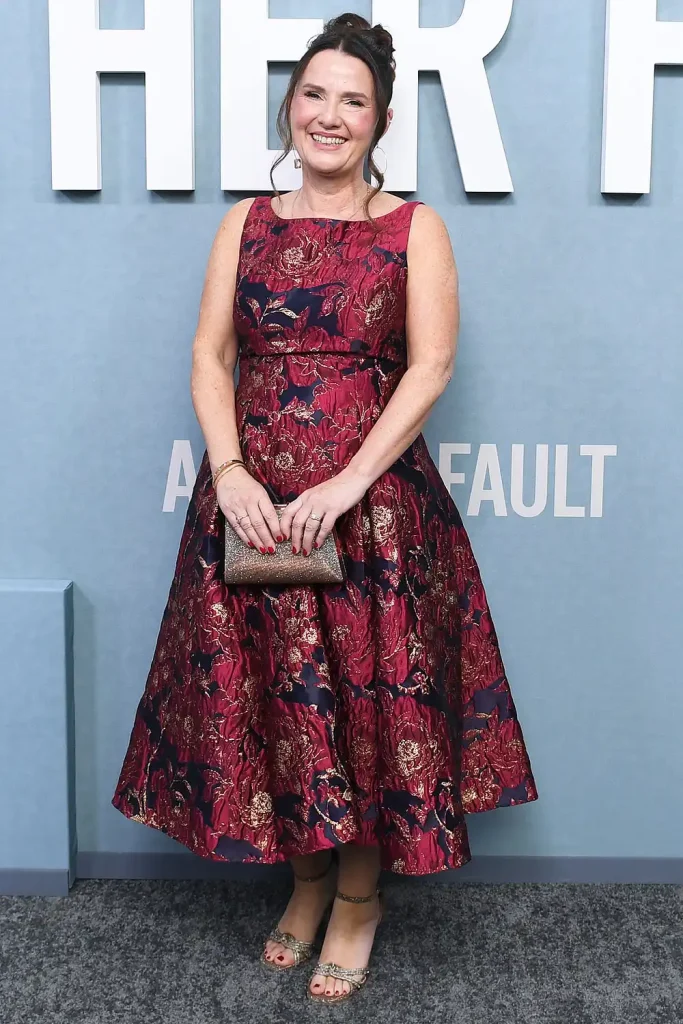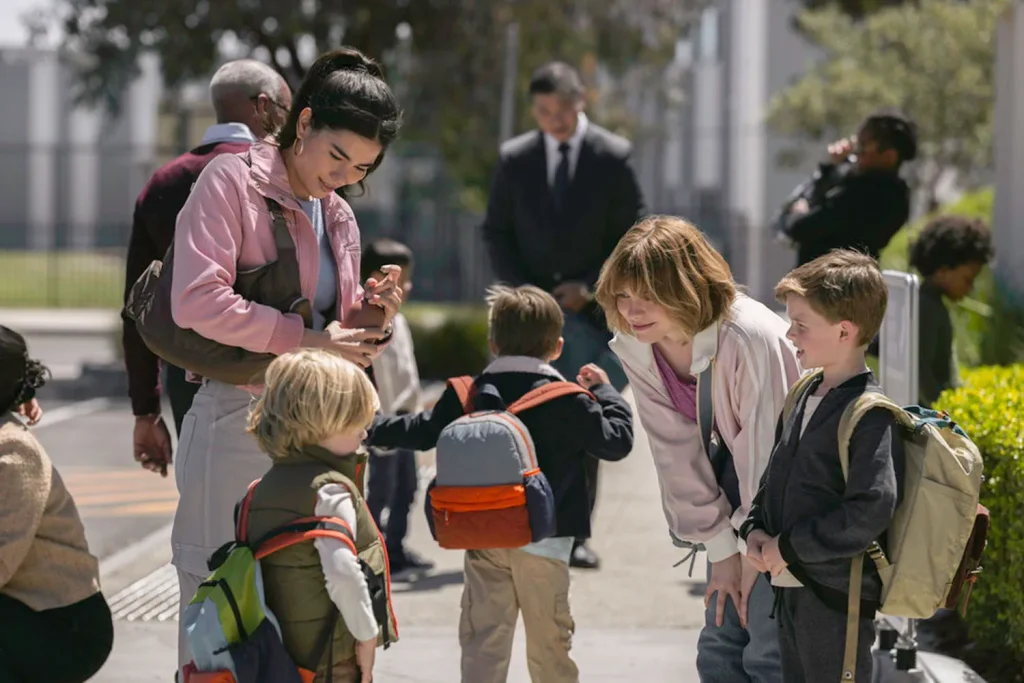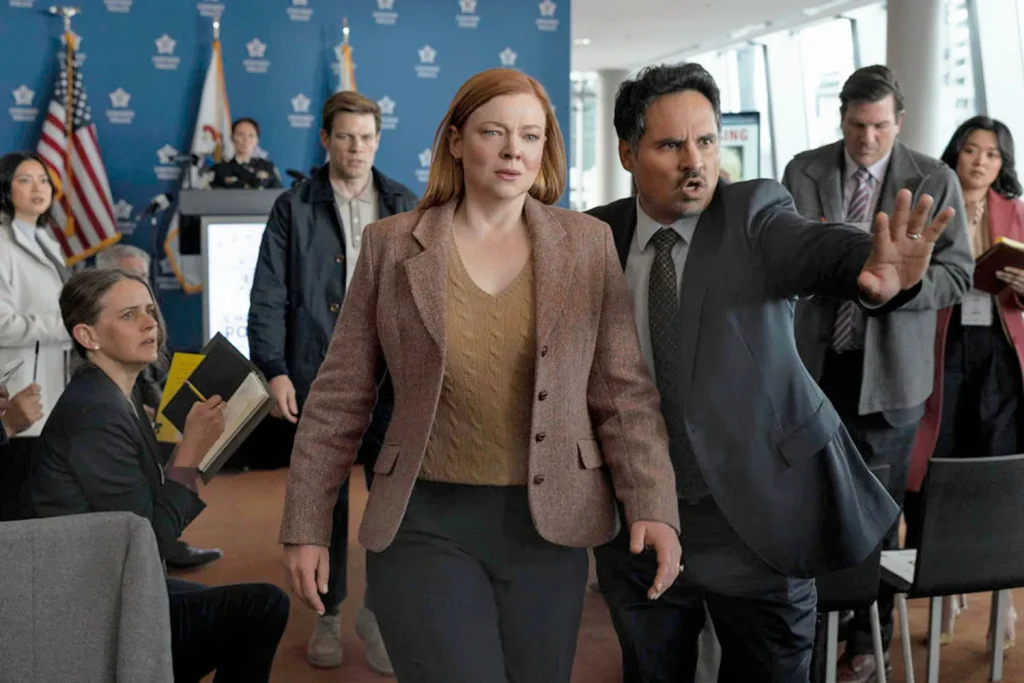The Heart-Stopping Real-Life Incident That Inspired All Her Fault — The Story That Still Haunts Parents Today
When Peacock’s new psychological thriller All Her Fault premiered, viewers were immediately captivated — and unsettled — by its chillingly relatable premise. The show, adapted from Andrea Mara’s 2021 best-selling novel of the same name, opens with what should be an ordinary, everyday moment: a mother driving to pick up her son from a playdate. But when she arrives at the house, nothing is as it seems. The door opens to a stranger who has never heard of her son, her friend, or any playdate at all. Within moments, the unthinkable becomes reality — her child has vanished.

That gut-wrenching concept — the nightmare every parent dreads — struck a universal chord. All Her Fault is not just another fictional thriller designed to entertain; it’s rooted in an unsettling kernel of truth. Behind the story lies the inspiration of real events, moments of confusion and terror that have echoed through headlines and family fears for decades.
Andrea Mara, an Irish author and former crime journalist, has spoken about how the seed for All Her Fault came from a real-life experience that stayed with her long after it ended. She was once running late to pick up her own child from a playdate and accidentally knocked on the wrong door — a completely innocent, everyday mistake. But when the door opened and a stranger’s confused face stared back at her, Mara described an immediate, chilling thought that flashed through her mind: What if my child wasn’t where I thought they were? What if something terrible had happened?

That single moment — brief, ordinary, but deeply human — grew into a haunting “what if” scenario that became the foundation of All Her Fault. As Mara later explained, her journalist’s instinct to imagine worst-case outcomes collided with her experience as a mother who understood how fragile safety can feel when it comes to children. What began as a fleeting anxiety became a full-blown psychological exploration of fear, guilt, and the quiet chaos of suburban life.
The show, like the novel, centers on Marissa Irvine, played with striking intensity by Sarah Snook, best known for her award-winning turn in Succession. Marissa’s day begins as any parent’s would — coffee in hand, running a bit behind schedule, mentally juggling errands and responsibilities. She expects a quick hello, a thank you, and a sleepy car ride home. Instead, she finds herself standing on a doorstep that leads into a nightmare. Her son Milo has disappeared, and every minute that passes deepens the mystery surrounding what happened.

What makes All Her Fault so powerful isn’t just its suspense, but its humanity. It captures that razor-thin line between normal life and catastrophe — the moment when everything you thought you understood about your world is ripped away. The story doesn’t rely on sensationalism or cheap twists; instead, it focuses on the raw emotional reality of panic, denial, and the desperate need for control in a situation that defies logic.
The real-life undertone behind Mara’s story mirrors a truth many parents know too well: the fear that safety is an illusion. Though All Her Fault is fictional, its premise taps into numerous documented cases that have made global headlines over the years — instances where children vanished under mysterious or mistaken circumstances, or where small miscommunications turned into devastating outcomes.

One of the most chilling parallels is the 2007 disappearance of Madeleine McCann, the British child who vanished from a Portuguese resort while her parents dined nearby. While Mara’s novel is not based on that case, it shares the same core terror — the sudden disappearance of a child in what was supposed to be a controlled, familiar setting. That sense of violation, of reality collapsing into chaos, became the emotional backbone of All Her Fault.
In interviews, Mara has noted that while her background as a crime journalist helped her craft the story’s procedural accuracy, it was motherhood that gave it heart. She understood the small details — the text exchanges between parents arranging playdates, the trust built over school years, the way mothers instinctively double-check each other’s homes and schedules. Those mundane rituals of trust are exactly what make the premise so unnerving when they fail.

The television adaptation takes those emotions and magnifies them through cinematic storytelling. The production leans heavily on tone — muted colors, long silences, and slow camera movements that echo the growing unease. Sarah Snook’s portrayal of Marissa grounds the show in authenticity, portraying not just a mother in panic, but a woman unraveling the threads of her own self-belief. Her performance is raw, restrained, and deeply human — a portrait of grief, guilt, and relentless determination.
Critics have praised the show’s balance between psychological realism and edge-of-your-seat pacing. Rather than turning the story into a sensational crime thriller, All Her Fault unfolds like an intimate tragedy, revealing layers of betrayal, misunderstanding, and fear. Every episode peels back another truth — not just about what happened to Milo, but about the people around him.
For Andrea Mara, that emotional complexity was intentional. She wanted to explore how quickly trust can fracture when crisis strikes — between neighbors, friends, even within families. The question isn’t just “Where is the child?” but “Who can we really trust?” In a world where appearances mask so much, the novel and show both ask whether anyone truly knows their community.
Part of what gives All Her Fault its lasting power is how close it feels to real life. The world of the story — the quiet suburbs, the organized routines, the social niceties — mirrors the environments where many modern parents live. It’s a place of WhatsApp groups, polite smiles, and shared school runs — yet underneath that surface lies unspoken pressure, competition, and secrecy. Mara captures that duality perfectly, turning everyday spaces into landscapes of dread.
The real-life inspiration behind the story serves as a sobering reminder of how fragile peace can be. While Mara’s own incident ended harmlessly — her child was safe, the wrong house just a mix-up — the fleeting panic she felt opened a psychological door. That brief emotional shock, multiplied and fictionalized, created a narrative that explores what happens when that worst fear doesn’t go away.
In the age of true crime obsession and viral news stories, All Her Fault also asks viewers to reflect on society’s complicated relationship with fear. The media often amplifies stories of missing children, fueling both awareness and anxiety. Mara’s work takes that collective dread and turns it inward, examining not just the event itself but the ripple effects — how it destroys reputations, tests marriages, and exposes the fragility of human empathy.
For many parents watching the series, the most disturbing part isn’t the mystery — it’s the recognition. The show forces audiences to confront the uncomfortable truth that parenting today often means balancing vigilance with exhaustion. Even the smallest mistake — a wrong address, a delayed message, a misheard plan — can spiral into a crisis. It’s that sense of “it could happen to anyone” that makes All Her Fault so gripping and unforgettable.
Since its debut, both the novel and the series have sparked conversations about safety, motherhood, and the illusion of control. Viewers have flooded social media with reactions, many admitting they couldn’t stop watching despite the emotional intensity. Parents in particular have called the story “terrifyingly relatable,” with some saying it made them double-check every playdate and pickup plan.
Still, what keeps All Her Fault from becoming just another anxiety-fueled drama is its empathy. Andrea Mara doesn’t exploit fear — she examines it. She understands that the real horror isn’t in the kidnapping itself but in the psychological aftermath: the endless “what ifs,” the guilt that never fades, the haunting realization that trust can’t always protect those we love most.
In the end, All Her Fault is both a thriller and a mirror — reflecting our modern fears through the story of one mother’s nightmare. It’s a reminder that safety, even in the most comfortable lives, is never absolute. And yet, within that fear, there’s also resilience — the unstoppable drive of a parent who will do anything to bring their child home.
As audiences continue to uncover the layers of the story, one truth remains clear: the power of All Her Fault lies not in its twists, but in its realism. It doesn’t just ask viewers to imagine a tragedy — it makes them feel what it’s like to live inside one.


